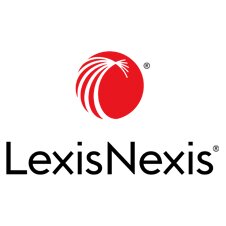Industry analysis from LexisNexis: Renewing relationships
This article was also featured as an industry analysis in the December 2016 issue of Briefing. To read the issue in full, download Briefing.
Most law firms recognise the need for managing relationships in the organisation – but they’ll often deploy client relationship management technology with limited focus on the end user experience, which negates its value. CRM becomes all about an IT system to ‘manage contacts’, obtaining that elusive ‘single view’, marketing lists, event management efficiencies, and so on. It’s a ‘treadmill’ approach to CRM adoption – arduous, time-consuming, mired in complex integration issues with other systems, and utterly tactical. To derive true business value, CRM should be like a ‘windmill’ – effortless, unobtrusive, built on the ‘do it for me’ principle.
Treadmill – doing the hard work
Perhaps the biggest mistake firms make is to deploy a CRM ‘platform’ for the organisation. That way the system delivers the same functionality to all – but the reality is that users in varied roles need to view and consume data differently. Partners and lawyers need quick and easy access to data to understand firm-wide client engagement to date (and in the future) to best prepare for meetings – whereas marketing professionals may need to manage groups of contacts and lists for content production. The CRM system must deliver on these different requirements, and with minimal effort on the part of the users. A search for a particular contact on the CRM system may throw up all related results, but thereafter it takes the user numerous clicks and laborious screen scanning to find the specific information. Data stewards need to update the database manually – and constantly – to ensure it’s up to date. These processes waste time, are cumbersome, and even discourage users from adopting CRM.
Corporate users of technology have come to expect the same level of sophistication in enterprise IT as they experience with consumer technology – that it’s hassle-free and efficient. Their consumer applications simply work. They ‘do what they say on the tin’. So why can’t enterprise IT be the same?
Windmill – effortless sources of power
Relationships drive business in law firms, and a lack can result in missed opportunities and revenue loss. At the same time, relationships are normally only effective if they are strong, but this depends on the value the firm delivers to the client or prospect. A law firm’s understanding of the client’s business is the single most important factor in creating meaningful differentiation for the organisation. For this, the CRM system must deliver relationship intelligence. It must reveal the unique and complex connections between people, companies, relationships, experience and expertise. This intelligence must be available to lawyers at the touch of a screen, or click of a mouse, anywhere, from any device, and at any time. A lawyer meeting a prospect should be able to look in the CRM system and easily see who else in the organisation knows the prospect, the strength of the relationship with the individual, and any touchpoints with the client firm-wide. It is these components that will drive a smarter conversation, so the software interface must bring the data to the lawyer instantly when it’s required. Here, the access to key information is effortless.
Opportunistic intelligence
Lawyers shouldn’t need to switch between technology interfaces. If a lawyer is researching a CEO on the internet (say, the organisation’s website), the relationship data in the firm’s CRM system should be visible without needing to move out of the browser. In effect, the CRM system facilitates seamless gathering of information (regardless of the type of interface being used) to deliver combined insight on the prospect (in this scenario, the CEO) at the right time – external data and existing intelligence from colleagues. It’s almost as if the information is following the individual and just presenting itself at the most opportune moment.
Another problem is that lawyers are too often tasked with unproductive actions, such as ensuring all key relationships are recorded in the firm’s CRM system. This time-consuming activity is a waste of expensive resource.
Many firms have key client programmes among their BD initiatives. But if any contacts are added to the CRM system from the firm’s list of top 20 target corporates, the system should automatically include these individuals in the key clients or prospect categories. It shouldn’t require manual effort. With the ‘do it for me’ approach, the CRM system captures contact information automatically, for example via business card scanners or from email signatures. It reduces the effort of lawyers ‘doing’ CRM.
You get the drift – the IT should be doing the hard work, not its users. The technology should be invisible to users, working in the background to support business activity. Like a windmill converting natural energy into power, a strong CRM system fuels improved client service – stronger relationships, new business opportunities and an altogether smarter operation.



